When it comes to kitchen design, one of the most important elements to consider is the choice of floor and wall tiles. The right tiles can not only enhance the aesthetic appeal of your kitchen but also provide durability and functionality. There are many options available in the market that cater to different styles and preferences. In this article, we will explore the benefits of using floor and wall tiles in the kitchen, as well as provide tips on how to choose the perfect tiles for your space. One of the main advantages of using floor and wall tiles in the kitchen is their durability. Kitchen floors and walls are subjected to a lot of wear and tear on a daily basis, from spills and stains to heavy foot traffic.
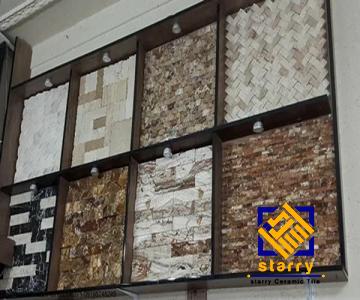
.
 Tiles are a great option in this regard as they are resistant to water, stains, and scratches. They are also easy to clean, making them a low-maintenance choice for busy kitchens. With proper care, tiles can last for many years without showing signs of wear. In addition to their durability, floor and wall tiles are available in a wide range of colors, patterns, and textures, allowing you to create a customized look for your kitchen. Whether you prefer a sleek modern aesthetic or a more traditional feel, there is a tile design to suit every taste. From classic subway tiles to intricate mosaic patterns, the options are endless. Choosing the right tiles can help you achieve the kitchen of your dreams and make a strong design statement. Aside from their practical and aesthetic benefits, floor and wall tiles also offer functional advantages in the kitchen. For example, tiles are excellent at retaining heat, which can be advantageous if you have underfloor heating or live in a colder climate. This can help to keep your kitchen warm and cozy, especially during the winter months. Tiles are also a good choice for households with allergies, as they do not harbor dust, dander, or other allergens like carpets or rugs might. When selecting floor and wall tiles for your kitchen, there are a few factors to keep in mind to ensure you make the right choice. The first consideration is the material of the tiles. Popular options include ceramic, porcelain, and stone tiles, each with its own advantages and drawbacks. Ceramic tiles are affordable and come in a wide variety of colors and patterns, making them a versatile choice for any kitchen. Porcelain tiles are denser and more durable than ceramic tiles, making them suitable for high-traffic areas. Stone tiles, such as marble or granite, add a touch of luxury to a kitchen but require more maintenance.
Tiles are a great option in this regard as they are resistant to water, stains, and scratches. They are also easy to clean, making them a low-maintenance choice for busy kitchens. With proper care, tiles can last for many years without showing signs of wear. In addition to their durability, floor and wall tiles are available in a wide range of colors, patterns, and textures, allowing you to create a customized look for your kitchen. Whether you prefer a sleek modern aesthetic or a more traditional feel, there is a tile design to suit every taste. From classic subway tiles to intricate mosaic patterns, the options are endless. Choosing the right tiles can help you achieve the kitchen of your dreams and make a strong design statement. Aside from their practical and aesthetic benefits, floor and wall tiles also offer functional advantages in the kitchen. For example, tiles are excellent at retaining heat, which can be advantageous if you have underfloor heating or live in a colder climate. This can help to keep your kitchen warm and cozy, especially during the winter months. Tiles are also a good choice for households with allergies, as they do not harbor dust, dander, or other allergens like carpets or rugs might. When selecting floor and wall tiles for your kitchen, there are a few factors to keep in mind to ensure you make the right choice. The first consideration is the material of the tiles. Popular options include ceramic, porcelain, and stone tiles, each with its own advantages and drawbacks. Ceramic tiles are affordable and come in a wide variety of colors and patterns, making them a versatile choice for any kitchen. Porcelain tiles are denser and more durable than ceramic tiles, making them suitable for high-traffic areas. Stone tiles, such as marble or granite, add a touch of luxury to a kitchen but require more maintenance.
..
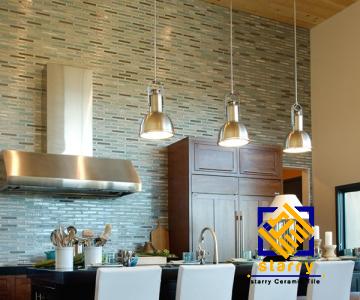 Another factor to consider when choosing tiles is the size and layout of the space. Larger tiles can create a sense of openness and continuity in a kitchen, especially in open-plan layouts. Smaller tiles, on the other hand, can add visual interest and texture to a space. The layout of the tiles, whether they are laid in a traditional grid pattern or a more contemporary herringbone design, can also impact the overall look of the kitchen. Consider the size and configuration of your kitchen when selecting the right tile size and layout. Color and pattern are important considerations when choosing floor and wall tiles for your kitchen. Light-colored tiles can make a small kitchen feel more spacious and bright, while dark-colored tiles can add drama and sophistication to a larger kitchen. Patterned tiles, such as geometric, floral, or abstract designs, can add visual interest and personality to a kitchen. Mixing and matching different tile colors and patterns can create a unique and stylish look that reflects your personal style. In conclusion, floor and wall tiles are an essential element of kitchen design that offer durability, functionality, and aesthetic appeal. Whether you prefer a sleek modern look or a more traditional feel, there are tiles available to suit every style and taste. By choosing the right material, size, layout, color, and pattern, you can create a kitchen that is not only beautiful but also practical and functional. Invest in high-quality floor and wall tiles for your kitchen to elevate its design and create a space that you will love for years to come. Selecting the right floor and wall tiles for your kitchen is crucial in achieving a cohesive and visually appealing space. Beyond the practical considerations of material, size, layout, color, and pattern, there are additional factors to take into account to ensure your kitchen tiles enhance the overall design of the room. One important aspect to consider when choosing kitchen tiles is the style of your kitchen. The tiles you select should complement the existing design elements and aesthetic of your space. For a modern kitchen with sleek lines and minimalist finishes, consider large format tiles in a neutral color palette to maintain a clean and contemporary look.
Another factor to consider when choosing tiles is the size and layout of the space. Larger tiles can create a sense of openness and continuity in a kitchen, especially in open-plan layouts. Smaller tiles, on the other hand, can add visual interest and texture to a space. The layout of the tiles, whether they are laid in a traditional grid pattern or a more contemporary herringbone design, can also impact the overall look of the kitchen. Consider the size and configuration of your kitchen when selecting the right tile size and layout. Color and pattern are important considerations when choosing floor and wall tiles for your kitchen. Light-colored tiles can make a small kitchen feel more spacious and bright, while dark-colored tiles can add drama and sophistication to a larger kitchen. Patterned tiles, such as geometric, floral, or abstract designs, can add visual interest and personality to a kitchen. Mixing and matching different tile colors and patterns can create a unique and stylish look that reflects your personal style. In conclusion, floor and wall tiles are an essential element of kitchen design that offer durability, functionality, and aesthetic appeal. Whether you prefer a sleek modern look or a more traditional feel, there are tiles available to suit every style and taste. By choosing the right material, size, layout, color, and pattern, you can create a kitchen that is not only beautiful but also practical and functional. Invest in high-quality floor and wall tiles for your kitchen to elevate its design and create a space that you will love for years to come. Selecting the right floor and wall tiles for your kitchen is crucial in achieving a cohesive and visually appealing space. Beyond the practical considerations of material, size, layout, color, and pattern, there are additional factors to take into account to ensure your kitchen tiles enhance the overall design of the room. One important aspect to consider when choosing kitchen tiles is the style of your kitchen. The tiles you select should complement the existing design elements and aesthetic of your space. For a modern kitchen with sleek lines and minimalist finishes, consider large format tiles in a neutral color palette to maintain a clean and contemporary look.
…
 On the other hand, if you have a more traditional kitchen with ornate cabinetry and rustic elements, opt for patterned or textured tiles in warm tones to add character and charm. The choice of grout color is another detail that can significantly impact the overall look of your tiled kitchen. Grout color can either blend seamlessly with the tiles for a cohesive appearance or contrast for a more distinctive design statement. Light-colored grout can create a subtle and uniform look, while dark-colored grout can define each tile and add depth and interest to the space. Consider the effect you want to achieve and select the grout color that best complements your chosen tiles. In addition to style considerations, it’s essential to think about the functionality of the tiles in your kitchen. High-traffic areas such as the floors near the stove or sink may require more durable tiles that can withstand frequent use and cleaning. In these areas, opt for materials like porcelain or natural stone that are resistant to stains, scratches, and moisture. For kitchen walls, where tiles are less likely to experience heavy wear, you have more flexibility in terms of material and design. Another consideration when choosing kitchen tiles is maintenance and cleaning. While tiles are generally easy to clean and maintain, certain materials may require more care than others. Natural stone tiles, such as marble or slate, often need to be sealed to protect them from stains and water damage. On the other hand, ceramic and porcelain tiles are low-maintenance options that are resistant to water and stains, making them ideal for busy kitchens. Consider your lifestyle and level of commitment to maintenance when selecting tiles for your kitchen. When it comes to the installation of floor and wall tiles in the kitchen, hiring a professional tiler is recommended to ensure a high-quality and long-lasting finish. Proper installation is crucial in preventing issues such as uneven tiles, cracked grout, or water damage over time. A skilled tiler will be able to assess your space, recommend the best materials and installation techniques, and ensure that your tiles are laid smoothly and securely. In conclusion, floor and wall tiles are an essential component of kitchen design that can elevate the look and functionality of the space. By choosing the right materials, colors, patterns, and layout, you can create a kitchen that is not only beautiful but also durable and practical. Consider your kitchen style, maintenance needs, and desired aesthetic to select tiles that enhance the overall design of your space. With proper planning and professional installation, your kitchen tiles will provide years of beauty and functionality for you to enjoy.
On the other hand, if you have a more traditional kitchen with ornate cabinetry and rustic elements, opt for patterned or textured tiles in warm tones to add character and charm. The choice of grout color is another detail that can significantly impact the overall look of your tiled kitchen. Grout color can either blend seamlessly with the tiles for a cohesive appearance or contrast for a more distinctive design statement. Light-colored grout can create a subtle and uniform look, while dark-colored grout can define each tile and add depth and interest to the space. Consider the effect you want to achieve and select the grout color that best complements your chosen tiles. In addition to style considerations, it’s essential to think about the functionality of the tiles in your kitchen. High-traffic areas such as the floors near the stove or sink may require more durable tiles that can withstand frequent use and cleaning. In these areas, opt for materials like porcelain or natural stone that are resistant to stains, scratches, and moisture. For kitchen walls, where tiles are less likely to experience heavy wear, you have more flexibility in terms of material and design. Another consideration when choosing kitchen tiles is maintenance and cleaning. While tiles are generally easy to clean and maintain, certain materials may require more care than others. Natural stone tiles, such as marble or slate, often need to be sealed to protect them from stains and water damage. On the other hand, ceramic and porcelain tiles are low-maintenance options that are resistant to water and stains, making them ideal for busy kitchens. Consider your lifestyle and level of commitment to maintenance when selecting tiles for your kitchen. When it comes to the installation of floor and wall tiles in the kitchen, hiring a professional tiler is recommended to ensure a high-quality and long-lasting finish. Proper installation is crucial in preventing issues such as uneven tiles, cracked grout, or water damage over time. A skilled tiler will be able to assess your space, recommend the best materials and installation techniques, and ensure that your tiles are laid smoothly and securely. In conclusion, floor and wall tiles are an essential component of kitchen design that can elevate the look and functionality of the space. By choosing the right materials, colors, patterns, and layout, you can create a kitchen that is not only beautiful but also durable and practical. Consider your kitchen style, maintenance needs, and desired aesthetic to select tiles that enhance the overall design of your space. With proper planning and professional installation, your kitchen tiles will provide years of beauty and functionality for you to enjoy.
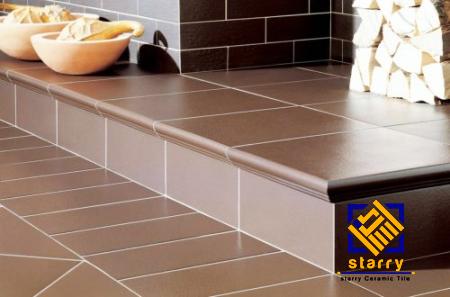
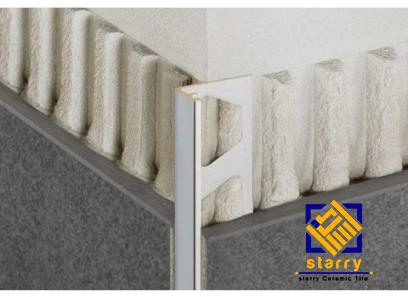
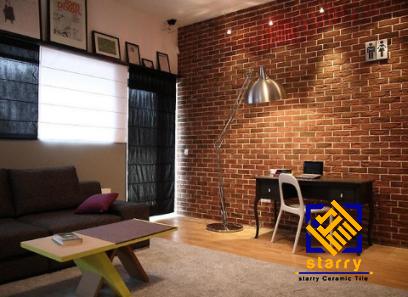
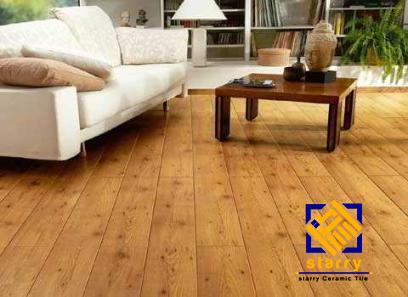
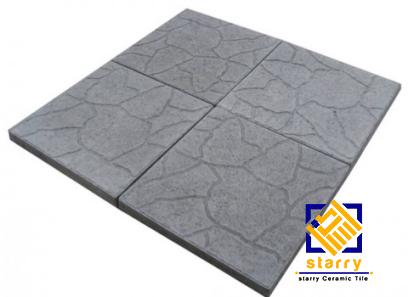

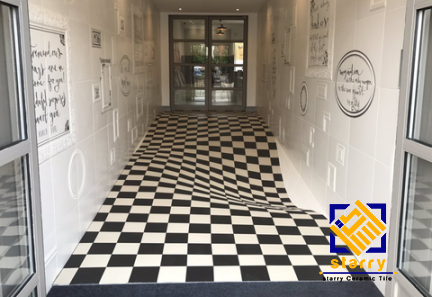

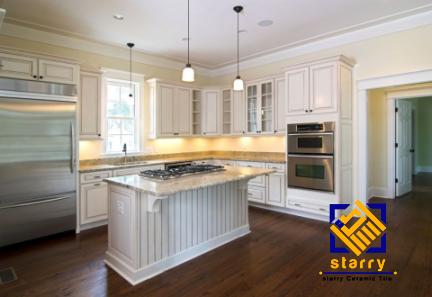
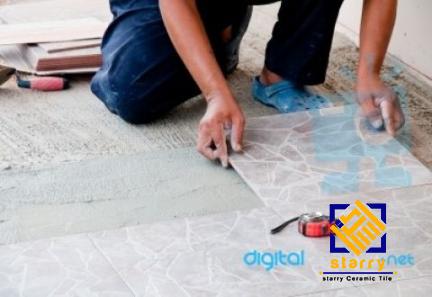
Your comment submitted.